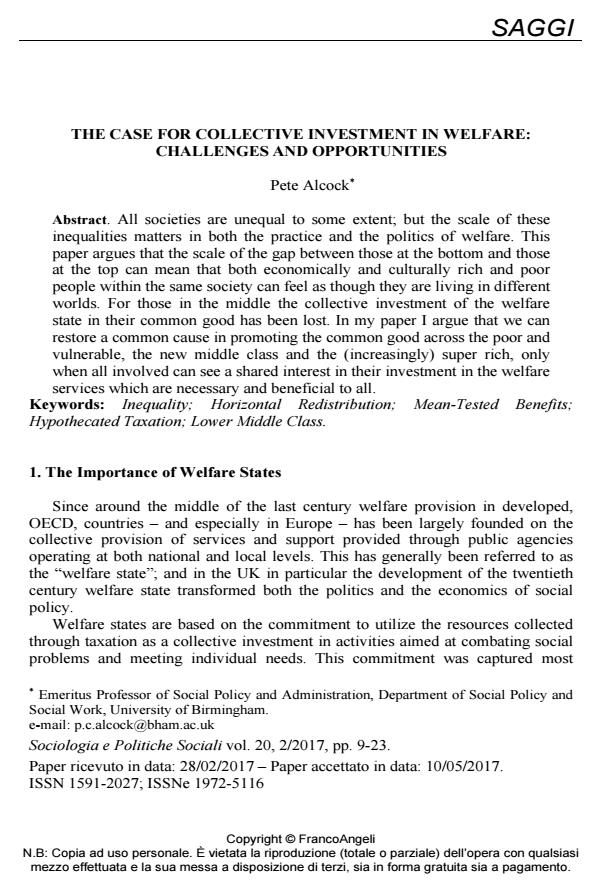The case for collective investment in welfare: challenges and opportunities
Journal title SOCIOLOGIA E POLITICHE SOCIALI
Author/s Pete Alcock
Publishing Year 2017 Issue 2017/2
Language English Pages 15 P. 9-23 File size 239 KB
DOI 10.3280/SP2017-002002
DOI is like a bar code for intellectual property: to have more infomation
click here
Below, you can see the article first page
If you want to buy this article in PDF format, you can do it, following the instructions to buy download credits

FrancoAngeli is member of Publishers International Linking Association, Inc (PILA), a not-for-profit association which run the CrossRef service enabling links to and from online scholarly content.
All societies are unequal to some extent; but the scale of these inequalities matters in both the practice and the politics of welfare. This paper argues that the scale of the gap between those at the bottom and those at the top can mean that both economically and culturally rich and poor people within the same society can feel as though they are living in different worlds. For those in the middle the collective investment of the welfare state in their common good has been lost. In my paper I argue that we can restore a common cause in promoting the common good across the poor and vulnerable, the new middle class and the (increasingly) super rich, only when all involved can see a shared interest in their investment in the welfare services which are necessary and beneficial to all.
Keywords: Inequality; Horizontal Redistribution; Mean-Tested Benefits; Hypothecated Taxation; Lower Middle Class
Pete Alcock, The case for collective investment in welfare: challenges and opportunities in "SOCIOLOGIA E POLITICHE SOCIALI" 2/2017, pp 9-23, DOI: 10.3280/SP2017-002002